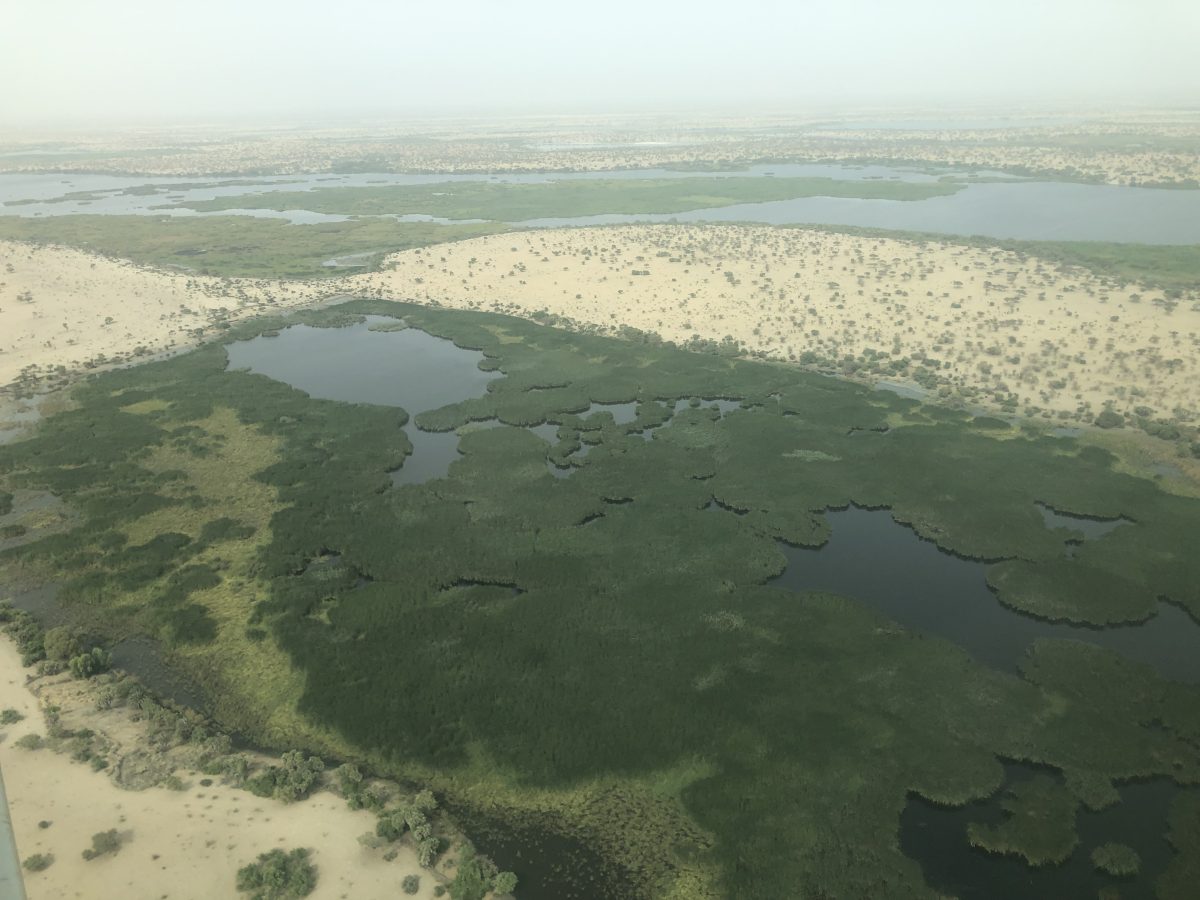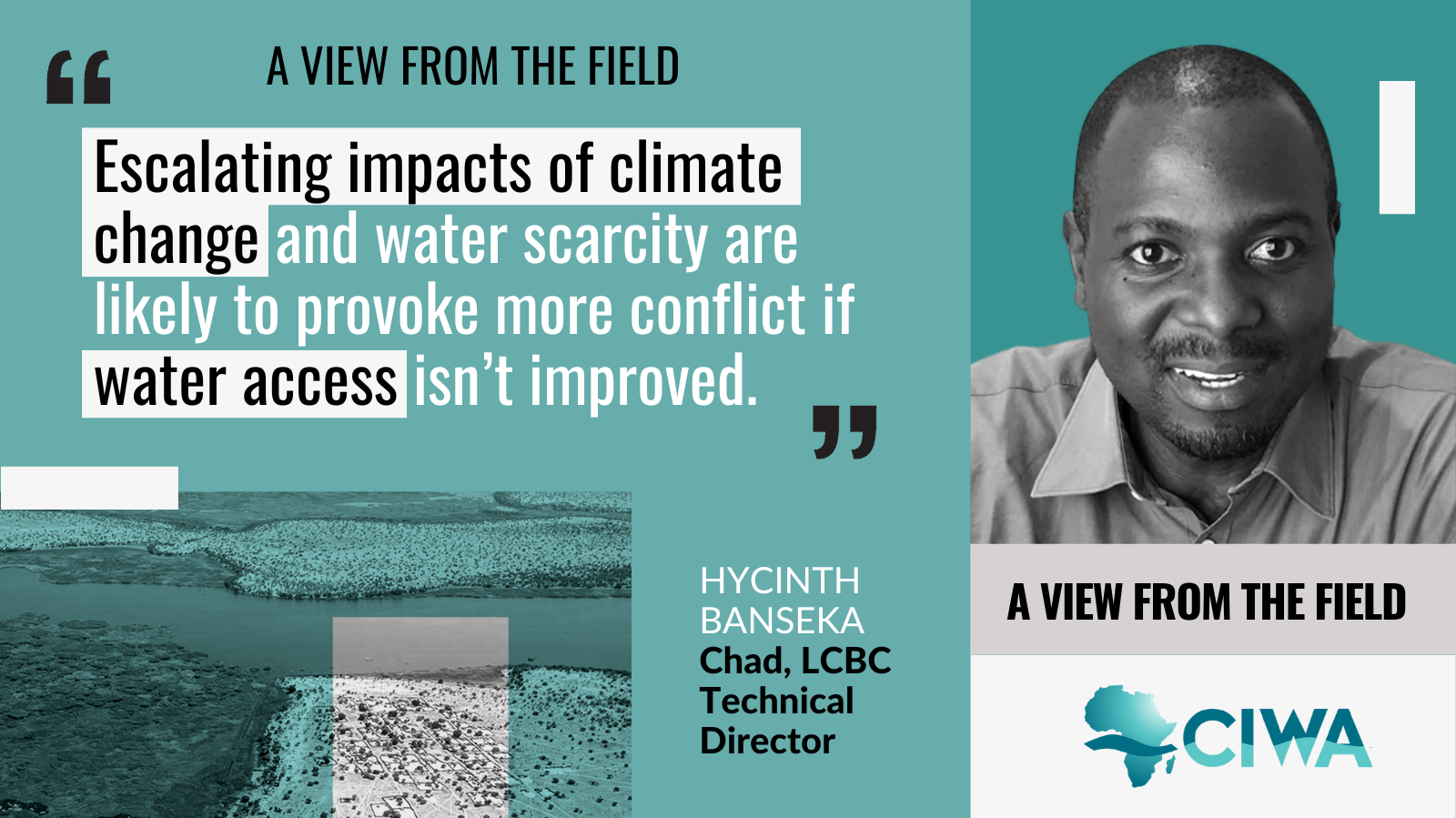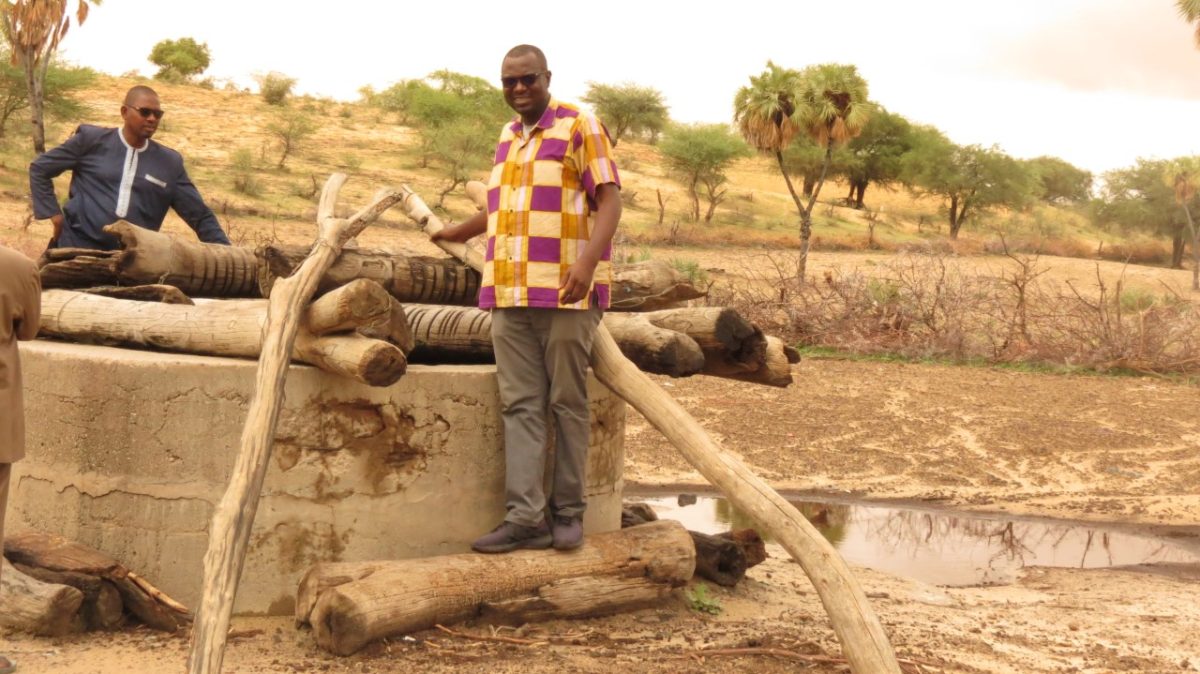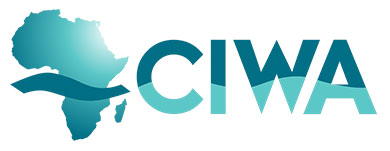Water Security Is the Way Out of the Conflict-Climate Risk Trap in Lake Chad Basin
Posted in : Blog on 11 January 2023
West and Central Africa faces compounding challenges including increased climate change impacts, such as prolonged drought and unpredictable rainy seasons causing flooding in the Sahel; high population growth and migration within the region; and also fragility due to weak institutions, political instability, conflicts, and terrorism. The Cooperation in International Waters in Africa (CIWA) is working to improve water resources management by identifying investments and policy actions, and addressing knowledge and capacity gaps. Share on X As such, it is conducting a Water Security Assessment in Lake Chad basin as the first step toward developing a transformative water security framework for addressing the region’s challenges.
The rich biodiversity of Lake Chad, its wetlands, associated groundwater systems and watercourses provide important ecosystem services and support an estimated 30 million people whose livelihoods are closely linked to agricultural, herding and fishing activities. They are primarily located in the countries that share the lake (Cameroon, Chad, Niger, and Nigeria), but are also in parts of northwestern Central African Republic that are in the lake’s active hydrological basin. While the overall topographical and groundwater basin extends far north and east to include parts of Algeria, Libya and Sudan (some 2.4 million km²), the “active” hydrological basin, or “conventional” basin as covered under the Lake Chad Water Charter, is 967,000 km².

While productive, the basin faces profound challenges, including climate shocks and some of the world’s highest concentrations of extreme poverty, conflict, and terrorism that force massive displacement and weaken the economic and social fabric of communities. The basin’s population is caught in a conflict-climate risk trap. Political, social, and security stressors are overwhelming governments on one hand; while on the other hand, climate change impacting weather variability, including changes in rainfall patterns and greater uncertainty, increases the risk of conflict around natural resources. To compound the challenges, the region is experiencing high rates of growth whereby the population could double between 2010 to 2045 placing further pressure on increasingly scarce natural resources.
Hycinth Banseka is the technical director for the Lake Chad Basin Commission (LCBC), which administers the Lake Chad Water Charter. He, along with other LCBC staff, is working with CIWA to develop an assessment for a transformative ‘water security approach’ to natural resource management. In an interview with CIWA, Mr. Banseka explained how climate change, insufficient access to water, and conflict interact to harm local communities. Higher temperatures and evapotranspiration decrease availability of water resources for people’s livelihoods and economic activities, leading to increased tension sometimes resulting in conflict. For example, in Cameroon, diminished water quantity has led some fishers diverting water from streams through ditch-canals to create small ponds for raising fish. But the canals cross plains where cattle are grazing, and some fall into the ditches jeopardizing the livelihood of the herders.
Last year, ethnic violence erupted between herders and fishers in two tribal communities in northern Cameroon that were already plagued by violence due to the militant group Boko Haram. The fighting left at least 12 people dead in one week and caused thousands of people to flee their homes. While violence is not new,“escalating impacts of climate change and water scarcity are likely to provoke more conflict if water access isn’t improved for the different communities”. This is exacerbated by increased access to arms due to the presence of militant groups.
Banseka further notes that “we cannot do much about climate change, but what we can do is to improve practices” to use water more efficiently and reduce the degradation of water resources.
At the same time, conflict and displacement have a negative impact on water security. As of October 2022, the International Organization for Migration estimated there were 3.1M internally displaced people, and some 320,000 refugees in the Lake Chad region. Displaced women are particularly vulnerable due to the precarious conditions they are forced to work under such as limited water supplies and the use of isolated wells exposing them to physical hardship and gender-based violence.

The water needs of refugees living in camps place additional stress on local water resources, often causing tension with hosting communities. Banseka argues that, “if you have a community that has only one or two boreholes that provide drinking water, how do thousands of refugees get water? This causes strain and, in turn, more conflict risk with host communities. The key to resilience is improving water resources management and promoting more equitable access.”
“We need to develop strategies to ensure that wherever people live, they have access to the water that they need allowing them to develop their economic activities and maintain their communal organizations and ties,” Share on X notes Banseka. He maintains that this will increase their resilience to climate shocks and make them more resistant to extremist threats, thus helping to minimize internal conflicts.
Water security is also the key to sustainable development. “You can’t have development in an insecure environment,” says Banseka, further noting that “the question is: how do we improve security and gradually migrate from emergency response to development?”

CIWA’s Lake Chad Transboundary Water Security (WSA), which is examining the risk factors—especially climate change— that drive vulnerability, water insecurity, and conflict, will contribute to efforts by the World Bank and other donors to help… Share on XThe WSA builds on lessons learned from the past 20 years of regional engagement of national and international institutions, including the World Bank. The assessment will present a transformative water security framework by expanding the scope of interventions to encompass a wide spectrum of water resource management options, including groundwater and nature-based adaptation measures, to better integrate multiple water governance systems/layers beyond RBOs (River Basin Organizations), especially in contexts susceptible to fragility and conflict.
A regional stakeholder meeting is planned for early 2023 to review the WSA and deep-dive analyses and develop recommendations for water priorities. A round of more focused workshops to gather feedback from the field and finalize these products is expected in early 2023. The engagement will improve understanding of the perspectives and priorities of countries and overall basin. The workshops will also obtain stakeholder feedback and buy-in to identify key water security needs, improve the model for supporting transboundary waters management, and continue advancing progress toward recipient-executed work.
1. IMO Displacement Tracking Matrix – Lake Chad Basin Crisis October, 2022
Learn more
Articles
UN convenes Lake Chad countries, amid growing regional crisis
Blogs
The integrated problemshed: a solution for water security in the G5 Sahel
A comprehensive understanding of water resources helps manage and reserve Lake Chad
Video (PROLAC)
Promoting collaboration for harnessing Lake Chad’s potential
Lake Chad Basin crisis: Chad (UNDP Productions)

